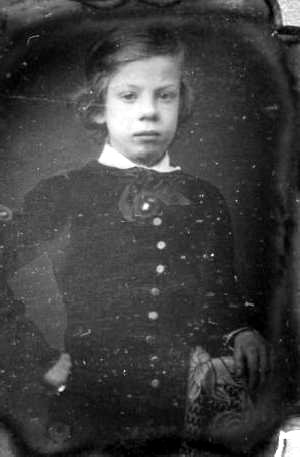
Figure 1.-- This Daguerreotype portrait was taken in Brooklyn, New York. We believe it was taken in the 1850s, but we are not positive. He wears a collar-buttoning jacket with military styling--brass buttons. |

Our information about suits in the mid-19th century is still quite limited, especially on the 1840s because of the sacrcity of photographic images. We know much more about the 1850s and even more about the 60s. As far as we can tell, boys did not commonly wear suits in the 1840s, except for the most affluent. And boys who did wear suit jackets, commonly did not have matching trousers. Suits seem to to be more common in the 1850s, The predominany style seems to be have been jackets with button-up collars. Military styles including brass buttons were popular. Suits become more common in the 1860s. Many younger boys wore cut-away jackets done in various styles. Older boys wore button-upn jackets. we also see boys wearing sack suit jackers with lapels.
Our information about suits in the mid-19th century is still quite limited, especially on the 1840s because of the sacrcity of photographic images. As far as we can tell, boys did not commonly wear suits in the 1840s, except for the most affluent. And boys who did wear suit jackets, commonly did not have matching trousers. Most boys wore long pants with their suits. We do not boys from affluent urban familes wearing short jackets, extending to only waist level. We have acquired quite a few Daguerreotype portaits on HBC, but unfortunately few are dated, Thus we can not destinguish between the 1840s and 50s. One that is dated shows an unidentified American boy in 1847. Notice the very loud plaid vest. Although not a boys' style, we see teenagers wearing somber frock coat suits. A good example is Clarence E. Summer.
|
We know much more about the 1850s as we begon to see more photographic evidence, although these early images are difiicult to date. Suits seem to to be more common in the 1850s. It still was not very common to haven matching jackets and trousers. The predominany style seems to be have been jackets with button-up collars. Most were cut quite short. Military styles including brass buttons were popular. We also notice short jackets with lapels that also come to the waist. This seems to be a style that was more popular earlier. A good example is the jackdts worn by unidentified brothers, we think about 1850. We notice Eton suits. A good example is two London boys in the 1850s.
We notice some sack suits with lapels, primarily for older boys. Another short jacket, the cut-away jacket, does not seem very common.
Most boys wore long pants with their suits.
|
It is a little difficult to differentialte between suits worn in the 1840s and 50s, but suits worn in the 1860s are much easier to spot. This is un part because the CDVs appear in the earlt 60s, proving a clean break in portrait types. We still see dags, ambros and tin-types in the early 6-s, but the CDV and a few years later the cabinent card quickly became the most popular formats. The cut-away jacket became more common in the 1860s. A good example is Charles J.J. Carter. We are not entirely sure why this new style so rapidly became so popular. Perhaps rising affluence enabled families to more closely adopt popular European fashions. Many younger boys wore cut-away jackets done in various styles. These cit-away jackets were not very common in the 1850s. Some cut-way jackets were radically cut away. Others only slightly. Somne were very plain while others had elaborate decoratrion such as enbrodiery. In sime cases the decoration was repeated on the trousers. Matching the jacket and trousers became much more popular in the 1860s. Older boys wore button-upn jackets. we also see older boys more commonly wearing sack suit jackers with lapels. These were generally worn by older boys, but we see some younger boys wearing them as well. Vests were very popular in the 1860s, but not the loud contrasting vestrs popular in the 1840s. Most boys wore long pants with their suits, but we see some younger boys wearing knee pants or bloomer knickers.
Younger boys still wore cut-away jackets, but they gradually declined in populrity over the decade.
We no longer see cut-away jackets much in the 1880s. The one exception is the classic Little Lord Fauntleroy jacket. The small, open front jaclets were perfect for showing off fancy Funtleroy blouses. There were other types of Fauntleroy jackets, but the small cut-away jacket was by far the most popular.
Navigate the Historic Boys' Clothing Web Site:
[Return to the Main suit jacket mid-19th century chronology page]
[Introduction]
[Activities]
[Biographies]
[Chronology]
[Clothing styles]
[Countries]
[Bibliographies]
[Contributions]
[FAQs]
[Glossaries]
[Images]
[Links]
[Registration]
[Tools]
[Boys' Clothing Home]
Navigate the Historic Boys' Clothing Web chronological pages:
[Early 19th century]
[Mid-19th century]
[The 1860s]
[The 1870s]
[The 1880s]
[The 1890s]
[The 1900s]
[The 1910s]
[The 1920s]
[The 1930s]
[The 1940s]
[The 1950s]
[The 1960s]
[The 1970s]
[The 1980s]
Navigate the Historic Boys' Clothing Web style pages:
[Skeleton suits]
[Eton suits]
[Norfolk jackets]
[Kilts]
[Knicker suits]
[Blazers]
[Short pants suits]
[Long pants suits]